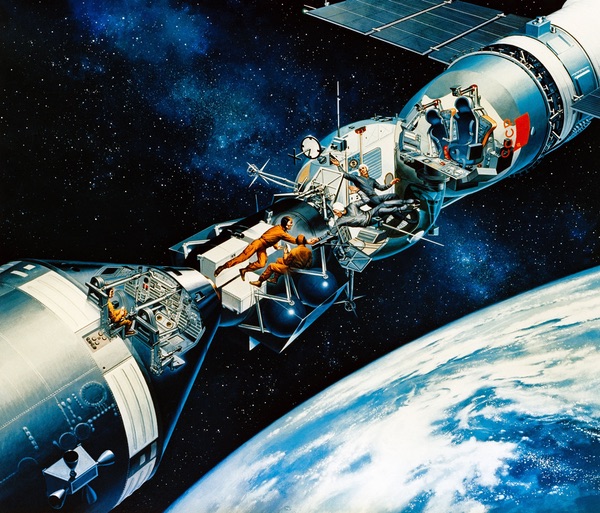Handshakes and histories: The Apollo-Soyuz Test Project, 45 years laterby Asif Siddiqi and Dwayne A. Day
|
| Roscosmos has released a large trove of declassified documents about the Soviet side of this event which at the time seemed incredibly historic, but in retrospect now looks like a minor footnote in a long and continuing rivalry. |
Understanding the Apollo-Soyuz Test Project—or as the Soviets called it, Soyuz-Apollo—requires a tremendous amount of context. In the early 1970s, Richard Nixon and his senior foreign policy advisor (and later Secretary of State) Henry Kissinger engaged in a masterful bit of strategic diplomacy, approaching both the Soviet Union and China, a so-called “triangulation” strategy that sought to keep both rivals off-balance. In 1970, the NASA administrator proposed a joint space mission with the Soviet Union. This was not unprecedented: NASA and White House officials had proposed various forms of space cooperation for a decade with little interest from their Soviet counterparts. But this time Soviet officials responded positively. By April 1972, both countries signed a cooperative agreement committing them to a space mission by 1975. In the meantime, Nixon made a historic visit to China, and then later a visit to Moscow. The Apollo-Soyuz mission was in many ways intended to be the most visible symbol of a new era of détente between the United States and the Soviet Union.
Over the past few years, Roscosmos has released numerous documents about its early space efforts. The Soviet space program operated in secrecy while the American civil space program operated in the glare of the media. These document releases have shed significant light on several early Soviet space events, like the launch of the early Sputniks and the flight of Yuri Gagarin. Some of these documents have changed historians’ understanding of key aspects of these missions.
The new documents released by Roscosmos are on the preparations for the launch, as opposed to the Apollo-Soyuz mission itself, which only lasted four days. Covering a period from November 1969 to June 1975, the documents are all from the head governmental branch that managed the Soviet space program, the so-called Ministry of General Machine Building (more commonly known by its acronym in Cyrillic “MOM”). This ministry oversaw a vast network and contractors that was in charge of the Soviet side of ASTP, including the organization currently known as the Energia Rocket-Space Corporation, which builds most of the hardware for Roscomos that is part of the Russian segment of the International Space Station.
Energia was actually formed as giant conglomerate in 1974, right in the middle of preparations for ASTP, and this now-forgotten transition hovers like a ghost over these documents. The genealogy of Energia can be traced back to the famous design bureau of the late and legendary Chief Designer Sergei Korolev, who passed away in 1966. From 1966 to 1974, the design bureau was headed by Korolev’s successor Vasily Mishin, who was effectively in charge of developing the Soviet hardware for ASTP until his ouster in 1974. Mishin’s firing was a complicated affair, largely a result of the failure of the N1 Moon rocket program, but the documents seem to suggest that it also affected ASTP. In these documents, Energia appears under the long-winded bureaucratic name the “Central Design Bureau of Experimental Machine Building” or its shortened acronym, TsKBEM.
The documents underscore three main points: how the Soviets planned to maintain secrecy about their program; how to ensure that they kept the July 1975 deadline despite numerous delays; and their early plans for a follow-on to the mission.
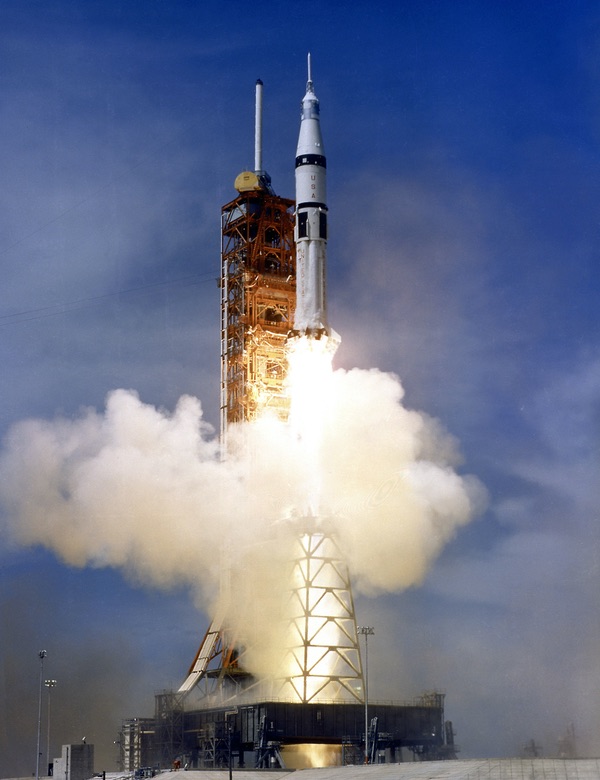 Launch of the Apollo spacecraft for ASTP on a Saturn IB rocket. (credit: NASA) |
Secrecy
As was evident already in the 1960s, the Soviets operated a space program shrouded in secrecy. The most basic aspects of the program—such as future plans, un-flown hardware, failures, important personnel, launch sites, organizational aspects, etc.—were kept hidden from the public. The obvious and overriding rationale for secrecy was that the organizations involved in the Soviet “civilian” space program were also deeply involved in the development of weapons systems such as ICBMs but also including military space assets. Opening the door to the space program would, it was believed, reveal military secrets. Undoubtedly another rationale was to portray the program in the most positive light as possible. Until the late 1980s, it was rare for official Soviet media to admit failures of any kind unless the failure was impossible to hide, such as the deaths of cosmonauts during space missions.
| In reality, Bushuyev was one of Korolev’s most senior and influential designers, having worked since 1946 on the Soviet missile and space programs. |
All this secrecy presented a huge problem for implementing Apollo-Soyuz since the American side rightly demanded a lot of key information on Soviet space hardware, including details of prior failures. In addition, to prepare for the project, Americans would have to be allowed to see many space facilities and meet many officials. The new documents clearly show ASTP forced the Soviets to relax secrecy restrictions even as they tried to main certain boundaries.
An order issued by MOM on December 29, 1972 deals with how to handle secrecy head-on. One major challenge was to host an “open” mission control center where Americans and foreign press could be present during the mission. A solution was found by essentially creating a brand-new control center at a ballistics support facility at a secret institute known as TsNIIMash in the Moscow suburb of Kaliningrad. The order asks that “defense themes” of the institute be “isolate[d]” and “to create conditions in the [ballistics center] that would eliminate unofficial contact between the institution’s specialists and the Americans.” In addition, there should be a “limit on the movement of Americans” while at the center. The leading organizations involved in ASTP, including TsKBEM, were ordered to come up with a list of their employees who could be “directly involved with Americans.” This small group of individuals served on the front line of Soviet ASTP negotiations. To guard against the disclosure of secrets, these individuals were “remove[d] from work on military topics” during their tenure of work on Apollo-Soyuz. All of this work to ensure secrecy was to be “coordinate[d] with the KGB,” representatives of which would “ensure control over their implementation.”
Although these documents do not specify it, through the entire Apollo-Soyuz project, the Soviet “director” of the project, Konstantin Bushuyev (1914–1978), was never identified as having worked for TsKBEM (or Energia). He (as well as other Soviet representatives) were simply identified as working for the Soviet Academy of Sciences. In the official NASA history of Apollo-Soyuz, The Partnership: A History of the Apollo-Soyuz Test Project (1978) written by Edward Clinton Ezell and Linda Neuman Ezell, Bushuyev is simply identified as a “Professor” without any affiliation or rank. In reality, Bushuyev was one of Korolev’s most senior and influential designers, having worked since 1946 on the Soviet missile and space programs. Through ASTP, Bushuyev worked closely with Glynn Lunney, the manager of Apollo-Soyuz on the NASA side.
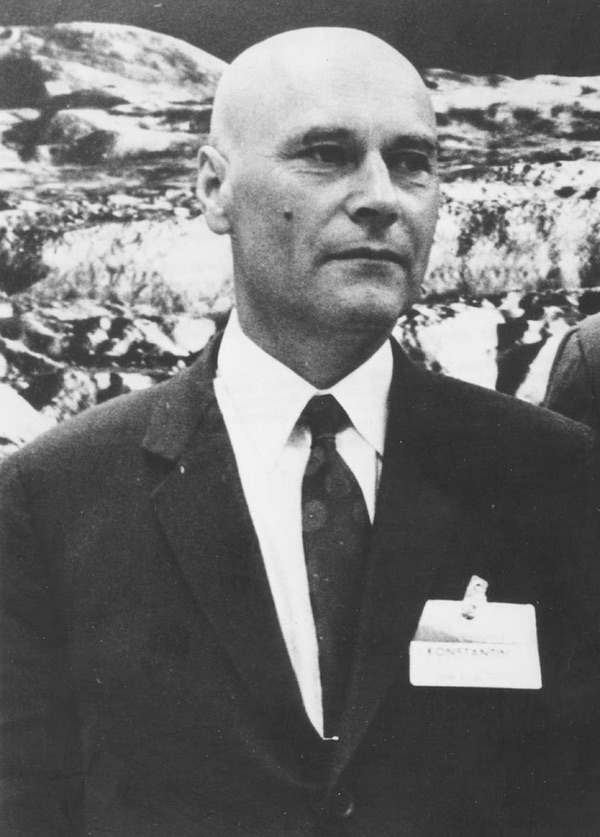 Konstantin Bushuyev (1914–1978) was the Soviet director of Apollo-Soyuz and was in regular contact with his American counterpart Glynn Lynney. Bushuyev was publicly identified as a “professor” affiliated with the Soviet Academy of Sciences but in fact he was a senior designer at the famous design bureau of his late boss Sergei Korolev. (credit: NASA) |
The documents clearly show that Bushuyev was involved in every single decision of the Soviet side, and his authority was quite substantial. In one document from July 27, 1973, Bushuyev was named “Chief Designer” of Apollo-Soyuz—a not-inconsiderable honor given only to heads of organizations and not to someone who technically worked for another chief designer, Vasily Mishin, who was the “real” chief designer of the organization.
Another person who repeatedly appears in the documents was Georgy Tyulin, a deputy minister at MOM who had the responsibility within the Soviet government to manage the project. Tyulin worked largely in the background and never came into contact with any Americans, although he bore final responsibility for the project’s implementation. The documents repeatedly emphasize how men like Bushuyev and Tyulin bore “personal responsibility” for the success of the project, implying in one sense, that failure might mean their dismissal.
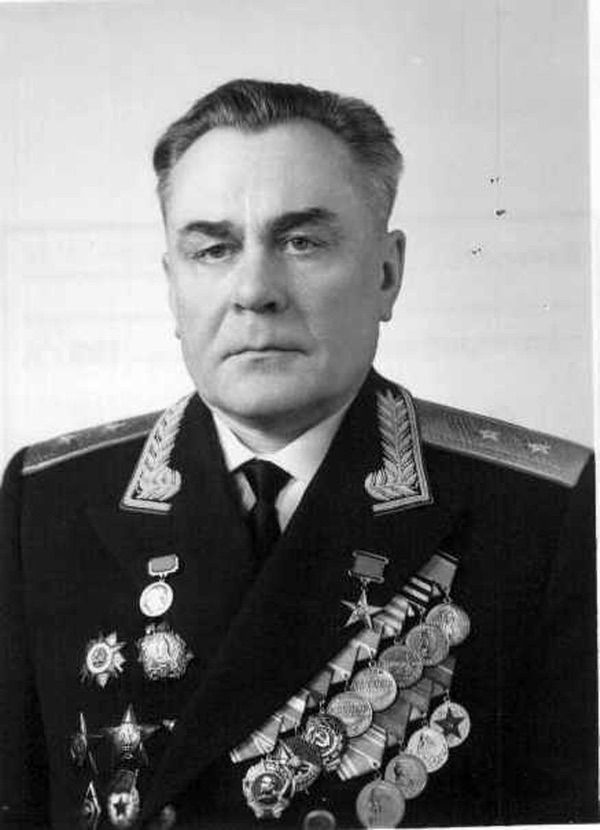 Georgy Tyulin (1914–1990) was the Soviet governmental manager directly in charge of the Soviet side of Apollo-Soyuz. His official post was as deputy minister of the Ministry of General Machine Building, the branch responsible for managing the Soviet space program. The new documents clearly show he coordinated much of the preparations for ASTP. He was never identified at the time for his role and his name was never associated with the Soviet space program until the late 1980s. He began his career as an artillery officer in World War II and then continued into the 1970s as a senior official in the Soviet space program. (credit: Asif Siddiqi) |
Delays
A second theme appears in the documents, the threat of delays in prepping for the flight. The documents clearly show a great deal of anxiety among Soviet management that the engineers would essentially screw up and delay the Soviet side of the flight, thus embarrassing the Soviet Union on the international stage. The documents show that through 1973 and 1974, there were delays of various sub-components of the Soyuz and its launch vehicle. In almost all documentation, the former is referred to as “Soyuz-M,” indicating that this was the 7K-TM variant of the Soyuz, an upgraded version of the 7K-T ferry designed to deliver cosmonauts to Salyut space stations.
| The documents clearly show a great deal of anxiety among Soviet management that the engineers would essentially screw up and delay the Soviet side of the flight, thus embarrassing the Soviet Union on the international stage. |
These upgrades to the Soyuz-M variant involved: the addition of a new docking unit compatible with the APAS androgynous unit that would connect Soyuz to Apollo; the installation of various new antennas to communicate with Apollo; new solar panels to ensure autonomous flight in Earth orbit for a week; the removal of the Igla rendezvous radar system used to approach Salyut stations; a new digital telemetry system; new internal TV systems; various modifications to the life-support system to support a more oxygen-rich environment compatible with Apollo (which also necessitated the use of new fire-control measures); and various smaller changes in the internal layout of the two inhabitable Soyuz modules which would be seen during TV broadcasts. All of this required testing, especially in orbit, and inevitably generated many delays.
Already in September 1973, a ministry document notes that the work on ground command, control, and communications was “absolutely unsatisfactory.” Later, in early November, at a meeting of the ministry’s upper management, there’s concern that “work on the Soyuz-M complex is going very unsatisfactorily,” especially with regard to the spaceship’s ionic attitude control system. Apparently, the system, which had been tested on the crewed Soyuz-12 mission, was still “unreliable.” At the meeting, deputy minister Georgy Tyulin was subjected to direct criticism for his management of the project.
About a week later, MOM Minister Sergei Afanasyev, the feared defense industry bureaucrat whose nickname was the “big hammer,” castigated the lead organization, TsKBEM—naming Mishin, Sadovskiy, Bushuyev, and Chertok—for “insufficiently … monitoring the course of development and manufacture of the systems of … subcontractor organizations.” In April 1974, when TsKBEM finally launched their robotic test version of the Soyuz-M, the flight was basically successful until reentry when the descent module implemented a ballistic instead of guided reentry. This appears to have alarmed management, although designers seemed less concerned about it.
A month later, there was a massive reorganization of the Soviet space program. Mishin was fired because of a series of failures, including the N1 Moon program—the fourth N1 rocket launch had failed in November 1972, and a fifth launch, eventually scheduled for launch in summer 1974, was canceled. Mishin was replaced by Valentin Glushko, who had coveted this position for many years. Although the documents make no mention of this change in leadership, implicitly at least they suggest that Glushko had a very negative view of Apollo-Soyuz. A document from June 1973, about a year before he took over Energia, shows the minutes of a ministry meeting to discuss progress on Apollo-Soyuz. Most of the discussion is relatively positive, but Glushko’s single statement is completely disparaging, criticizing various technical aspects of the Soviet approach to the project. In the broader context, this was not so odd: Glushko had had a long history of criticizing the work of Korolev’s old design bureau.
When he took over Energia in May 1974, Glushko was undoubtedly in an awkward position since he was now effectively in charge of the Soviet hardware for Apollo-Soyuz, technology that he had no hand in developing. Two months later, at a major ministry meeting (without Glushko present), the MOM Minister Sergei Afanasyev subjected Bushuyev to a tirade of criticism, blaming him for the ballistic reentry of the Soyuz-M test ship and giving him a formal “reprimand for lack of management … which led to design errors.” Another engineer, V. A. Timchenko, was called out for his “irresponsible attitude” and threatened with dismissal if “he didn’t take necessary measures to eliminate [his] deficiencies.” Fortunately, neither were fired before the mission. Bushuyev stayed on through the project until his untimely death in 1978. Timchenko later worked on Energia-Buran. And Tyulin, the deputy minister in charge of ASTP, retired in 1976, although it’s unclear if his departure had anything to do with the joint mission.
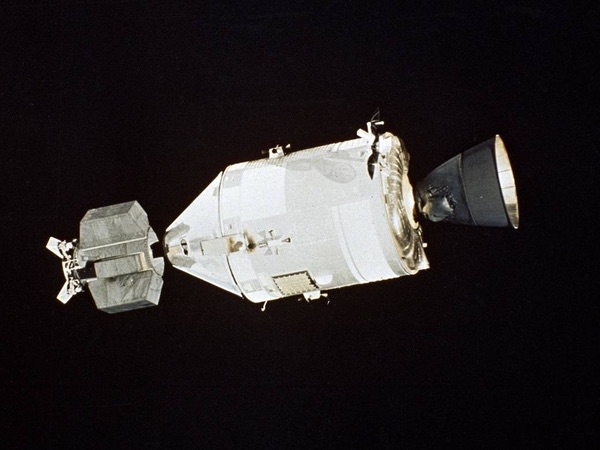 The Apollo and Soyuz spacecraft of ASTP. 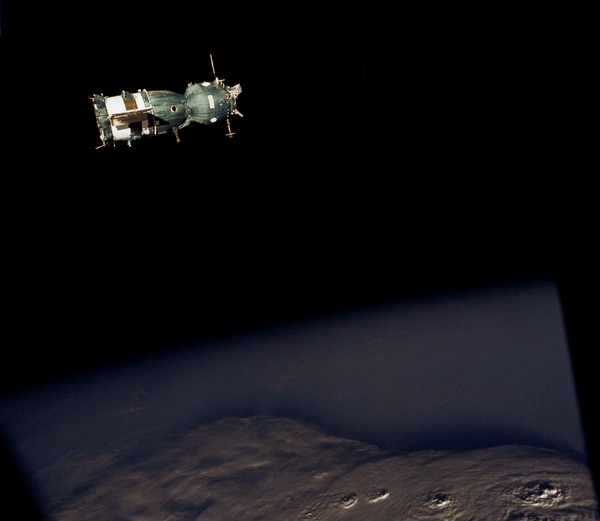 |
Future plans, and politics
The documents also include indications for a follow-on to Apollo-Soyuz. As soon as Valentin Glushko arrived as head of Energia—in fact, literally within a week of his appointment—he engineered an order from the ministry approving a proposal to explore a second Apollo-Soyuz flight, this one in the 1976–1977 timeframe using a Soyuz-M to dock with an Apollo for an “expanded scientific program.” There was also talk of initiating a new plan of joint lunar and planetary exploration with the US involving the Lavochkin organization. These proposals must be seen as part of Glushko’s general worldview—he wanted nothing to do with anything done under the Korolev/Mishin administration and sought his “own” achievements. This is shown in his cancelation of the N1-L3 piloted lunar landing program (and the subsequent gutting and destruction of all records and hardware associated with that program) and his new Energia-Buran proposal for a new set of launch vehicles, reusable spacecraft, and lunar bases.
| When asked, a CIA representative indicated that the United States would not gain any real technical benefit from the mission, but neither would the Soviets, because much information on Apollo was already public. |
The July 15, 1975, launch of Leonov and Kubasov was the first time that a crewed space launch was broadcast on live television inside the Soviet Union—and also the last one for many years. The Soviet leadership knew that the American launch would be broadcast live, and apparently decided that they did not want to be criticized for not doing the same. The Americans, for their part, broadcast live television from inside the Apollo spacecraft during launch, the first time NASA had done this. The spacecraft were linked up from July 17 to July 19, and the Soyuz returned to Earth on July 21, with the Apollo spacecraft following three days later.
The mission was, of course, enmeshed in the larger political relationship between the superpowers. Only a few months before the flight the United States withdrew from Vietnam, and television footage of the chaotic final hours of helicopters lifting off the rooftop of the American embassy in Saigon contributed to the opinion among senior Soviet leaders that the United States was in decline.
There were also questions within the United States government about whether the space mission would enhance the world’s perception of the Soviet space program. In June 1975, only a few weeks before the mission, the CIA briefed members of a Senate subcommittee, providing information on the mission the CIA described as coming from “extremely sensitive sources.” When asked, a CIA representative indicated that the United States would not gain any real technical benefit from the mission, but neither would the Soviets, because much information on Apollo was already public. “The principal advantage to the Soviets would be in their exposure to the more efficient U.S. training procedures,” the CIA official explained. At the conclusion of the briefing, Senator William Proxmire, a longtime critic of NASA, informed those present that he had not changed his mind about the mission. According to the CIA’s summary, Proxmire still opposed the mission “on the basic grounds that it exposes U.S. astronauts to an undue safety risk and there is little if anything for the United States to gain from this exercise and more to be gained by the Soviets.”
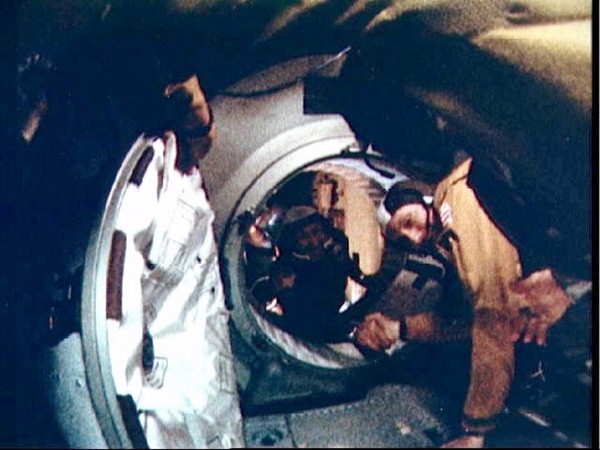 The Apollo-Soyuz handshake in space. (credit: NASA) |
During the Cold War, the United States intelligence community focused significant resources on monitoring the Soviet space program. From ground-based signals intercept and radar sites in Turkey and Iran, to satellites in geosynchronous orbit pointing large dishes down at Soviet launch sites, to signals intercept stations that gathered up spacecraft telemetry, to powerful reconnaissance satellites that photographed rockets and space equipment on the ground, the goal was to get as much information as possible about Soviet spacecraft and operations. Despite these tremendous assets, the US intelligence community still had some blind spots they needed to fill. After the ASTP mission, a mockup of a Soyuz spacecraft linked to an Apollo spacecraft was displayed in the Smithsonian’s brand-new National Air and Space Museum in downtown Washington, which opened in 1976. One evening soon after it was placed in the museum, a group of special visitors showed up—members of the US intelligence community. They pored over the Soyuz, taking measurements that they could use to calibrate their intelligence analysis. The Cold War was still on, after all.
At the time, the mission was considered both a technical and political success, and there were follow-on discussions about a future mission possibly involving having an American Space Shuttle dock with a Soviet Salyut space station. However, relations between the superpowers deteriorated by the later 1970s, particularly after the Soviet invasion of Afghanistan and the declaration of martial law in Poland. The Reagan Administration, which assumed power in early 1981, had no interest in space cooperation with the Soviet Union. It was not until two decades after Apollo-Soyuz that American and Russian spacecraft finally linked up in orbit again. Today, Russia and the United States have been cooperating on the International Space Station for more than two decades, a time when the overall relationship between the two countries has steadily deteriorated. Handshakes in space ultimately do not change history.
Note: we are temporarily moderating all comments submitted to deal with a surge in spam.
